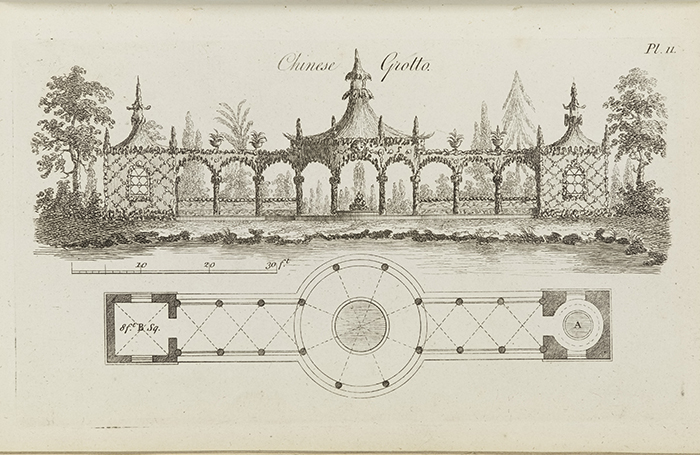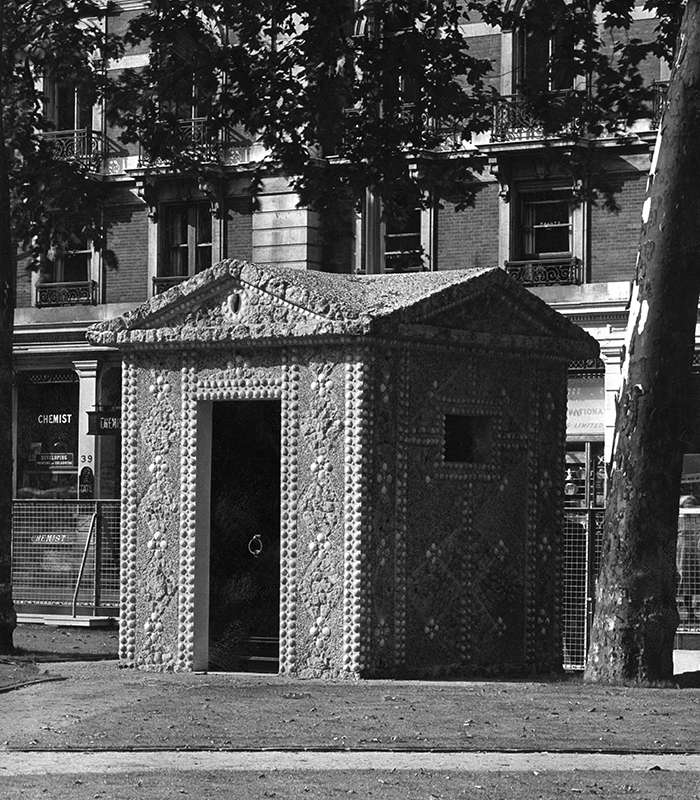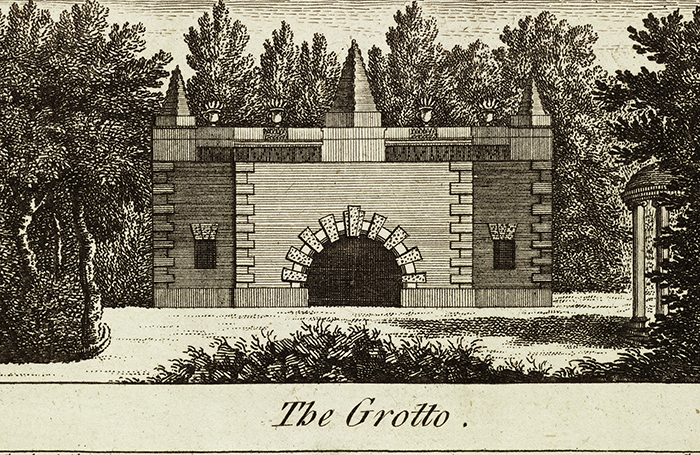Inside the Grotto
You might be surprised to learn that the tradition of visiting Santa in his ‘grotto’ at Christmas originated in Liverpool.
The world’s first Santa’s grotto is thought to have been at Lewis’s Department Store on Lime Street, in Liverpool city centre. It opened in 1879 as a "Christmas Fairyland”, and the idea took hold in the rest of the UK, US and Australia around the start of the 20th century.
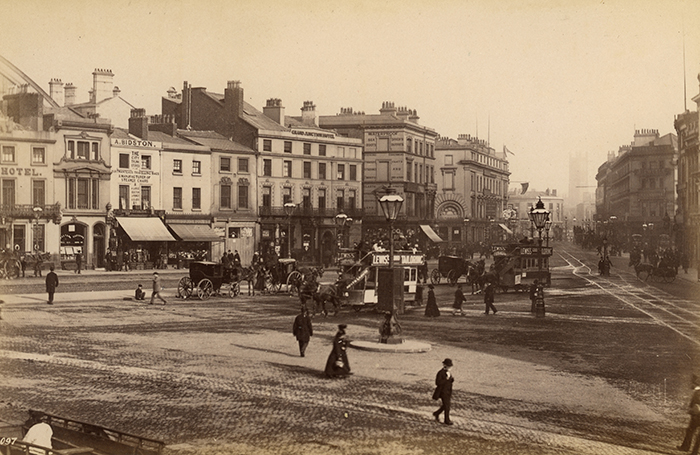
But the architectural tradition of grottos has been around far longer, and many more examples can be found in the RIBA Collections.
Early versions of these manmade, cave-like structures can be found as far back as the second century CE. The Roman emperor Hadrian built his villa, near Tivoli, to include underground passageways to retreat from the heat of the day. Hadrian also incorporated a vast network of pools, waterworks, niches and fountains inspired by the River Nile in Egypt. Ancient Greek and Roman civilisations built ‘nymphaea’, temples and enclosed fountains dedicated to the nymphs of Greek folklore.
From the 15th and 16th centuries there was a renewed interest among architects in Europe, in the art and buildings of ancient Greece and Rome. The 16th century Villa Farnese in Caprarola, Italy, has a fountain in the summer dining hall (pictured below) framed by a grotto-like relief sculpture.
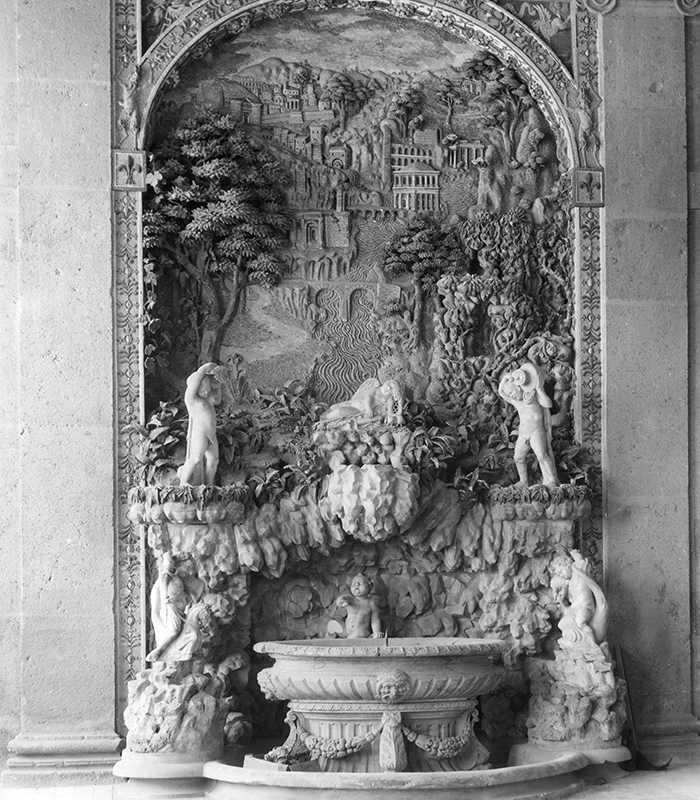
By the 18th century, grottos were a regular sight in the landscapes of the British landed gentry’s country estates, offering a romanticised rural backdrop from which to enjoy views and quietly reflect on the natural world. They were often constructed of heavily ‘rusticated’ stone, meaning they had a rough texture that imitated natural rock formations. They sometimes featured elaborate networks of tunnels and chambers, creating a winding route for visitors to explore.
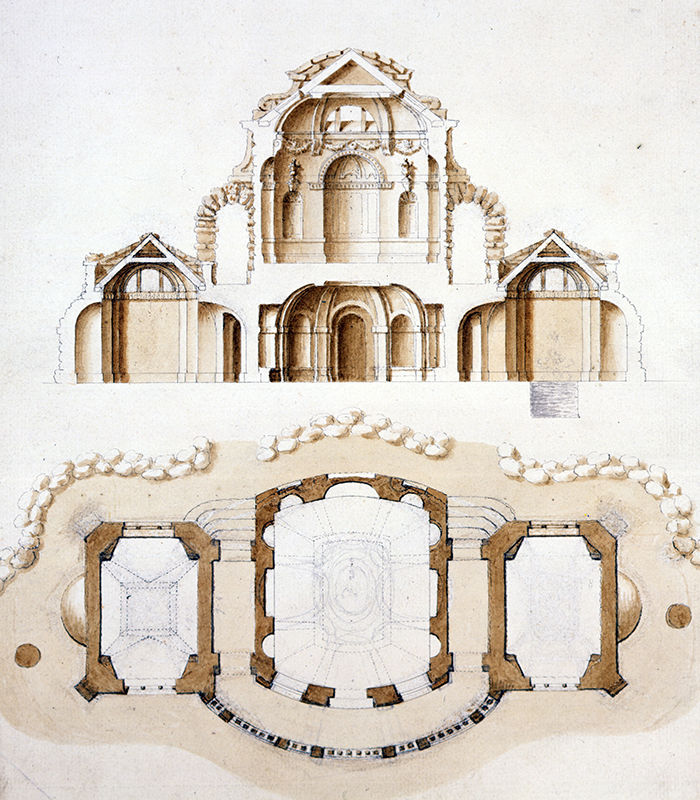
One of the best-known grottos of the 18th century was that of the poet Alexander Pope, in Twickenham, southwest London (pictured below). Like many of his contemporaries, Pope decorated the interior of his grotto with minerals and shells. He described the effect, when the door was closed, as “a luminous room, a camera obscura”.
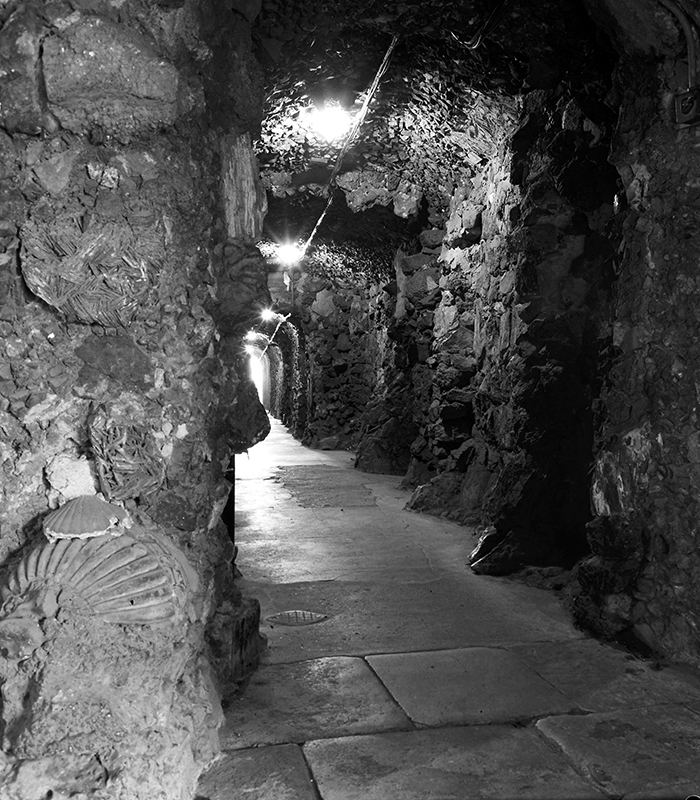
Architects also looked beyond the traditions of Greece and Rome for inspiration in the design of grottos. In 1767, William Wrighte compiled a volume of what he called “grotesque architecture”, meaning the architecture of grottos and related landscape structures such as baths, pavilions and green houses. It included “Chinese” style examples and “moresque pavilions”, which borrowed from and imitated Chinese and Islamic design traditions to create the hybrid, exoticised vision of eastern architecture that was popular in 18th century Europe.
The influence of 'grotto style' can also be found in more recent architecture. In the 1950s, part of Grosvenor Gardens in London’s Bloomsbury neighbourhood, was redesigned by the French architect Jean-Charles Moreux. He added two keeper’s lodges, which are decorated with English and French shells in a symbol of Anglo-French friendship that also recalls the rustic, shell-clad grottos of 18th century gardens.
Many of these grottos still survive and can be found at historic sites around the world. In the UK, you can see them at sites such as Stourhead, Stowe and Woburn Abbey, pictured below. You can also take an armchair tour of grottos around the world via RIBApix, our online library of images from the RIBA Collections.
